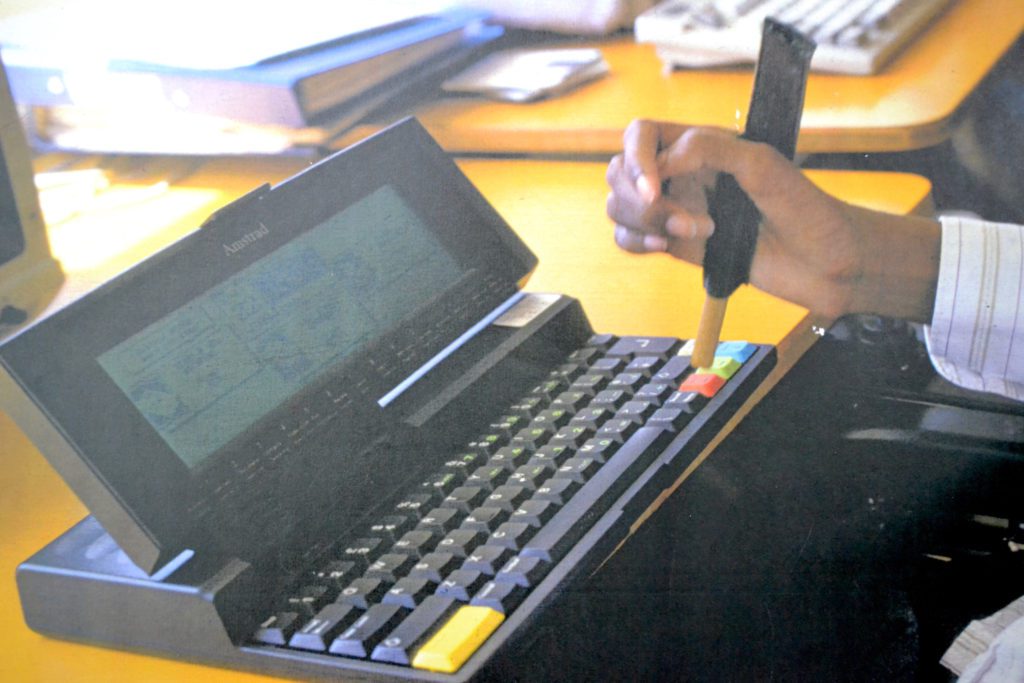The CENMAC Story
CENMAC was originally known as CENMACH in the 1960s.
CENMACH stood for Centre for Motor and Associated Communication Handicaps.
We are now known as CENMAC (Centre for Micro-Assisted Communication)
In the 1960s it became apparent that there was a need for the use of electric typewriters by physically disabled children unable to control a pen, and prevented from participating in the full range of classroom activities.
Edna Nicol was a teacher with experience of commercial typing, working in an Inner London Education Authority (ILEA) special school. When ILEA sought a teacher for secondment to research the needs of these children, Miss Nicol applied and was selected. In 1968, after her year’s research which concluded in a thesis on the use of writing aids, she became director of the new ILEA Resource Centre for Motor and Associated Communication Handicaps, based at Charlton Park School, continuing in this post until her retirement in April 1985.
With the help of Dr Marie Roe, then Senior Staff Inspector for Special Education, the Centre expanded both in staffing and in the amount and sophistication of equipment issued, in response to the growing demand of the severely physically handicapped children being admitted to the Authority’s schools. These children could do nothing for themselves, and had little or no speech. Miss Nicol proved that with patient and sensitive teaching they could achieve confidence and sufficient skill to operate specialised writing equipment with a switch.
In 1979 Miss Nicol was approached by Patrick Poon, a postgraduate electronics student at King’s College London, who was planning to research ways of speeding up the rate of writing of communication aid users. The Resource Centre became involved in this project, which has since been of enormous benefit to our children (and to many other children and adults outside of the ILEA, and indeed in other countries). These severely physically handicapped children can now write, draw, and use synthesised speech.
Twenty years on, in 1986, the Centre continued to help all ILEA teachers who have in their classes children whose educational progress is being hindered by their physical inability to communicate effectively either in speech or writing. It provided an advisory service for staff seeking information regarding communication aids, equipment, and associated teaching methods. It loaned equipment to special schools and advised on suitable writing aids for use by the growing number of children with special educational needs being integrated into mainstream schools.
Today, CENMAC continues to look forward and develop provision for children and young people wit in line with current educational thinking.
‘A Voice for All’ celebrates the history of CENMAC and 50+ years of assistive technology in education. The most important thing you can give to people with disability is a voice.
This film shows how advances in technology over the last 50+ years have had a major impact on improving the lives of people with disabilities helping them to communicate and gain access to education that would have been difficult or impossible without access to the technology.

Amstrad NC100 with stylus – 1 Archive photo (c) CENMAC



